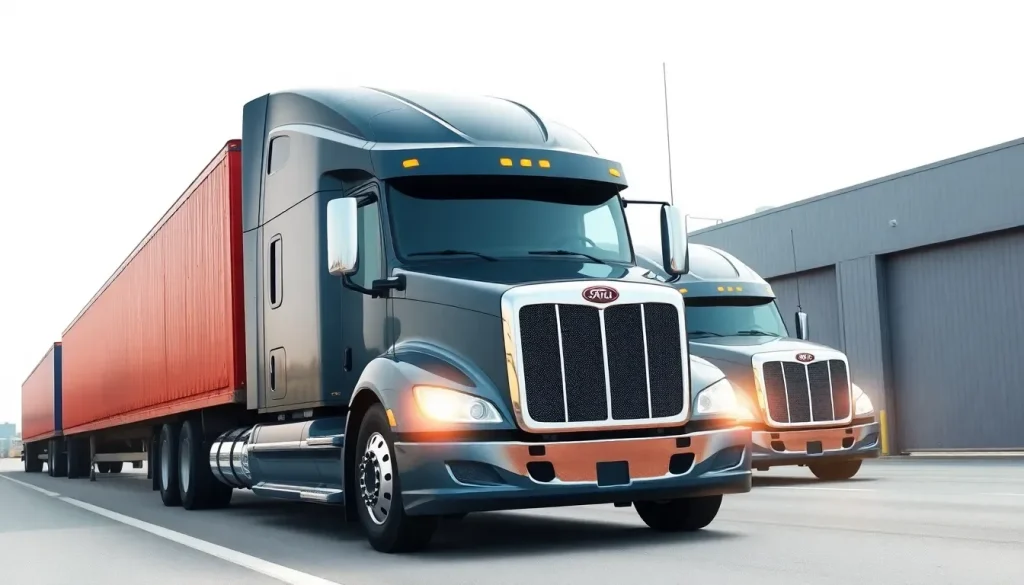U.S. fleets prepare for rising truck prices amid weak freight demand

The trucking industry is currently navigating turbulent waters, with economic indicators sending mixed signals. As the freight market continues to soften, U.S. fleets are bracing for potential challenges ahead, particularly concerning truck prices and demand dynamics. Understanding the intricacies of this situation is crucial for stakeholders looking to adapt and thrive.
As the landscape evolves, it becomes increasingly important to analyze the factors impacting the trucking sector. From tariffs to regulatory changes, various elements play a role in shaping the industry's future. This article delves into the key issues at hand and explores potential outcomes for trucking fleets.
Current trends in freight demand and truck pricing
According to FTR Transportation Intelligence, U.S. trucking fleets are likely to continue facing sluggish freight demand well into the coming year. This sentiment was reinforced during an October webinar featuring FTR chairman Eric Starks, who highlighted that while the gross domestic product (GDP) has shown resilience, consumer spending and existing home sales remain subdued.
Furthermore, Avery Vise, FTR’s vice-president of trucking, pointed out that there is an excess capacity in the market, suggesting that freight volumes will likely stay low for multiple quarters. He emphasized that while a recession is not imminent, the possibility of an economic downturn cannot be dismissed.
- Gross domestic product showing unexpected strength.
- Consumer spending remains lackluster.
- Existing home sales are depressed.
- Trucking capacities exceed justified freight volumes.
This situation has led many trucking executives to express concerns about the near-term outlook. During the recent FTR Transportation Conference, industry leaders remarked on the challenges their customers face, suggesting that the current market conditions are among the most difficult they have encountered.
The impact of truck tariffs on the industry
One significant factor contributing to the current climate is the imposition of truck tariffs, which could serve as a tipping point for many trucking operations. Vise noted that the recent announcement of 25% tariffs on heavy trucks not manufactured in the U.S. could lead to price increases potentially exceeding $30,000 for new models.
This escalation in costs raises serious concerns about fleet expansion during periods of increasing freight demand. Some carriers may choose to extend the lifespan of their existing equipment, but this approach carries its own risks, including higher maintenance costs and the potential for unplanned breakdowns.
Vise summarized the predicament faced by operators: “It is a difficult situation figuring out what to do in the coming months.” This uncertainty highlights the need for strategic planning within the ever-evolving market landscape.
Regulatory changes and their implications
Looking ahead, the U.S. government's recent crackdown on commercial driver’s licenses (CDLs) for non-citizens may help balance the trucking capacity sooner than anticipated. The emergency final rule from the U.S. Department of Transportation could potentially remove approximately 194,000 drivers from the roads.
The implications of this regulatory shift are significant, as FTR had initially projected an overcapacity in trucking to persist until at least 2027. However, with increased scrutiny on driver qualifications, this timeline may be accelerated, giving shippers more leverage in rate negotiations.
- Non-citizen CDL restrictions could decrease driver availability.
- Projected overcapacity might change due to new regulations.
- Increased focus on English proficiency for drivers.
Job market uncertainties stemming from government actions
Starks also expressed concerns regarding the state of the U.S. job market, indicating a trend of weakness over the past several months that is unlikely to improve soon. The impending government shutdown has exacerbated this uncertainty, leading to the delayed release of the monthly unemployment report by the Bureau of Labor Statistics.
Without this critical data, assessing the health of the job market becomes increasingly challenging. Recent reports from ADP Research revealed a significant loss of 32,000 private sector jobs in September, along with a downward revision of August's payrolls, which now reflect a loss instead of a gain. Dr. Nela Richardson, ADP's chief economist, stated, “This month’s release further validates what we’ve been seeing in the labor market, that U.S. employers have been cautious with hiring.”
Future predictions for the trucking industry
As stakeholders look toward the future, several questions arise regarding the potential trajectory of the trucking industry. With new tariffs, fluctuating demand, and regulatory changes, the landscape is complex. Some key considerations include:
- How will the tariffs affect the long-term pricing of trucks?
- What role will regulatory changes play in shaping driver availability?
- Will the economy see a rebound that could stimulate freight demand?
- How will trucking companies adapt to these ongoing challenges?
These factors are crucial for industry players to monitor as they formulate strategies to navigate this unpredictable environment. The resilience of trucking fleets will depend on their ability to adapt to these evolving circumstances while remaining responsive to market demands.
For further insights into the current state and future of the trucking industry, consider watching this informative video on the challenges and considerations facing the sector:




Leave a Reply